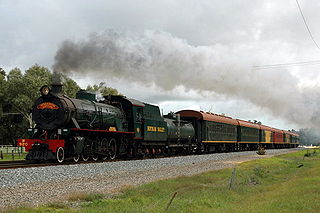
The Hotham Valley Tourist Railway is a tourist and heritage railway in the Peel region of Western Australia.

The X class was a class of diesel locomotives built by Beyer, Peacock and Company and Metropolitan-Vickers, Bowesfield Works, Stockton-on-Tees for the Western Australian Government Railways between 1954 and 1956.

The Y class was a class of diesel locomotives built by Clayton Equipment Company, Hatton for the Western Australian Government Railways between 1953 and 1955.
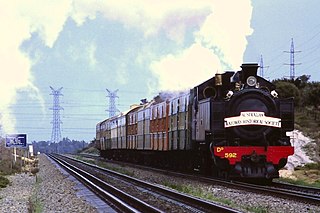
The WAGR Dd class was a class of 4-6-4T tank locomotive operated by the Western Australian Government Railways (WAGR) between 1946 and 1972.
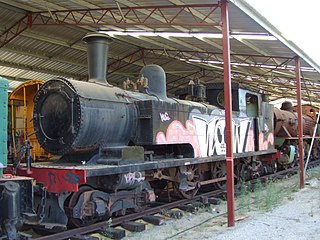
The WAGR N class was a class of steam locomotives operated by the Western Australian Government Railways (WAGR) from 1896 until 1960.

The WAGR S class was a class of 4-8-2 steam locomotives built by the Midland Railway Workshops between 1943 and 1947 and operated by the Western Australian Government Railways (WAGR).

The WAGR P and Pr classes were two classes of 4-6-2 steam locomotives designed for express passenger service on the Western Australian Government Railways mainline network. The initial designs were prepared by E.S. Race and together the two classes had a total build number of thirty-five locomotives, the P and Pr classes entering service in 1924 and 1938 respectively. Both classes were used on express passenger services, greatly improving the economy and speed of long-distance passenger travel in Western Australia, the results of which were most visible on the West Australian stage of the Trans-Australian Railway and Westland Express.

The K class are a class of diesel locomotives built by English Electric, Rocklea for the Western Australian Government Railways between 1966 and 1969.

The R/RA Classes are diesel locomotives built by English Electric, Rocklea for the Western Australian Government Railways between 1968 and 1972.

The T class was a class of diesel locomotives built by Tulloch Limited, Rhodes for the Western Australian Government Railways between 1967 and 1970.
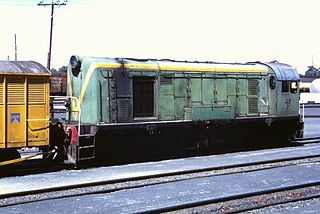
The F class were a class of diesel locomotives built by English Electric, Rocklea for the Midland Railway of Western Australia in 1958. They were later sold to the Western Australian Government Railways.

The C class are a class of diesel locomotives built by English Electric, Rocklea for the Western Australian Government Railways in 1962.

The WAGR A/AA/AB classes are classes of diesel locomotives built by Clyde Engineering, Granville, New South Wales, Australia, for the Western Australian Government Railways (WAGR) between 1960 and 1969.
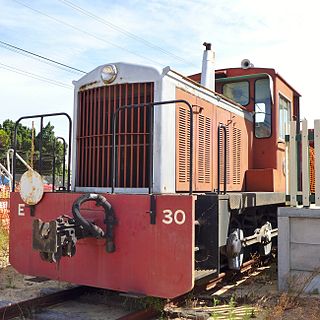
The MRWA E class was a single member class of diesel-hydraulic shunting (switching) locomotive built by Commonwealth Engineering, Bassendean, Western Australia, for the Midland Railway of Western Australia (MRWA) in 1957. The locomotive was later owned and operated by the MRWA's successor, the Western Australian Government Railways (WAGR).

The WAGR F class was a class of 4-8-0 heavy goods steam locomotives operated by the Western Australian Government Railways (WAGR) between 1902 and 1970.
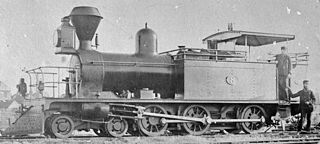
The WAGR B class was a class of 4-6-0T tank locomotives operated by the Western Australian Government Railways (WAGR) between 1882 and 1959.
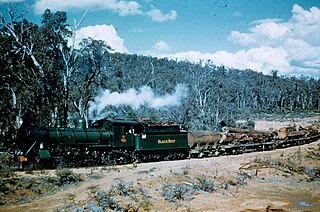
The WAGR C class was a class of light axle load steam locomotives operated by the Western Australian Government Railways (WAGR) between 1902 and 1961. A total of 22 were built in two batches.

The WAGR M class was a class of 2-6-0+0-6-2 Garratt-type articulated steam locomotives operated by the Western Australian Government Railways (WAGR) between 1912 and 1955. A total of 13 of them were built by Beyer, Peacock & Co, Manchester in two batches.

The WAGR T class was a class of 4-4-0 steam locomotives operated by the Great Southern Railway (GSR) and later Western Australian Government Railways (WAGR).



























